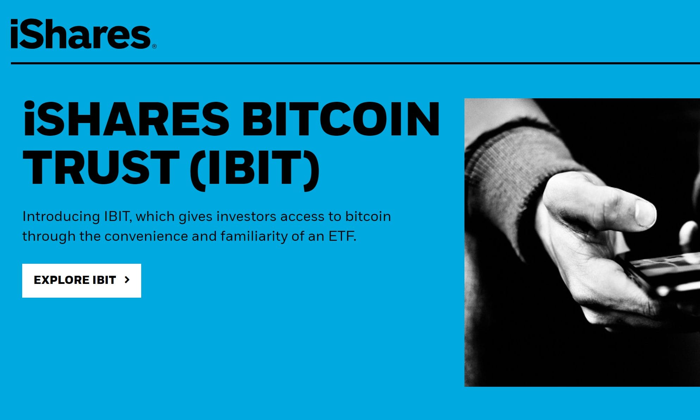Michael Saylor’s stance on Proof-of-Reserves (PoR) has captured significant attention, especially following his remarks at the Bitcoin 2025 conference in Las Vegas. With Strategy’s considerable holding of over 580,000 BTC, Saylor expressed strong reservations against adopting on-chain Proof-of-Reserves due to perceived liabilities and security threats. He cautioned that disclosing wallet information can create vulnerabilities, inviting potential attacks from hackers or malicious entities. Saylor’s comments sparked a notable response within the crypto community, as critics questioned whether his hesitation to provide transparency might indicate deeper issues. This debate intensified in the wake of the FTX collapse, as the industry reevaluates accountability measures like PoR to foster greater trust among users.
Michael Saylor’s reluctance to embrace on-chain proof systems has raised eyebrows, prompting discussions about the transparency of major cryptocurrency holders. By rejecting the practice of publicly disclosing wallet addresses, he highlights concerns about security risks and potential liabilities associated with such transparency. His comments reflect a broader strategy regarding Bitcoin assets, particularly in the post-FTX landscape, where many in the industry are striving to establish a standard of trust. Critics within the crypto community have voiced their skepticism, suggesting that Saylor’s stance may be more about evading scrutiny than genuine security considerations. As the blockchain ecosystem evolves, the balance between transparency and safety in asset management continues to be a hot topic.
Michael Saylor’s Concerns About On-Chain Proof-of-Reserves
During the Bitcoin 2025 conference, Michael Saylor articulated his reservations regarding the adoption of on-chain Proof-of-Reserves (PoR) amidst concerns about potential security vulnerabilities. Saylor emphasized that making wallet information public could invite unwanted attention from hackers and malicious entities, categorizing it as a dangerous act that creates significant liability for companies like Strategy. The prevailing sentiment among many industry leaders is that while transparency is vital in the crypto space, it should not come at the cost of security, especially for firms handling substantial digital asset inventories.
Saylor’s stance reflects a broader paradigm within the cryptocurrency market, where security and privacy are often weighed against transparency. This perspective has its supporters, who argue that on-chain PoR fails to accurately portray the complete financial condition of a firm, particularly in terms of liabilities and operational risks. By prioritizing security over PoR disclosure, firms can protect themselves against the unpredictable landscape of cyber threats that continue to plague the crypto industry.
The Fallout from FTX Collapse: PoR’s Importance in the Crypto Community
In the aftermath of the dramatic FTX collapse in 2022, the demand for on-chain Proof-of-Reserves surged across the crypto community, aiming to restore user trust through transparency. Many exchanges, including industry giant Binance, started to publish regular disclosures about their asset holdings to reassure investors and users. This shift demonstrated a collective recognition of the need for increased accountability within the cryptocurrency ecosystem, amplifying calls for financial disclosure as a safeguard against unexpected failures.
Despite these shifts towards greater transparency, Michael Saylor’s reluctance to adopt similar practices has raised eyebrows among analysts and enthusiasts alike. Critics argue that by avoiding on-chain PoR disclosure, companies may inadvertently trigger suspicion regarding their operational integrity. The crypto community calls for overarching transparency, especially from those who manage significant Bitcoin holdings, to establish a framework of trust that is crucial for long-term viability in the crypto market.
The continued conversation surrounding PoR highlights an evolving discourse within the industry on how best to balance transparency and security, especially following events like the FTX collapse. With many echoing the need for robust measures, the contrast between companies like Strategy and their more transparent counterparts reveals a division that could influence future crypto regulations and corporate practices.
The Crypto Community’s Response to Strategy’s Stance
Michael Saylor’s position on withholding on-chain Proof-of-Reserves has not gone unnoticed, as highlighted by reactions from the crypto community. With sentiments from analysts and enthusiasts turning critical, there are doubts regarding Strategy’s intentions and potential hidden liabilities. Notable among these criticisms is the assertion from pseudonymous analyst Pledditor, who described Saylor’s comments as a “giant red flag,” indicating a significant distrust towards firms that refuse to engage in transparency practices that many see as cornerstone principles in the cryptosphere.
The pushback from the community suggests a growing expectation for transparency within the industry, one that many believe is necessary to quell fears stemming from past events such as the FTX collapse. As the industry evolves, the willingness to adopt new measures like on-chain PoR could very well dictate public perception and the market viability of those who choose to rally behind or resist such strategies.
The Strategic Position of Strategy’s Bitcoin Holdings
Holding over 580,000 BTC positions Strategy as a formidable player in the cryptocurrency sector; however, the lack of transparency surrounding these holdings raises critical questions. The strategic decision to refrain from sharing detailed Proof-of-Reserves could be seen as a double-edged sword—while it protects the firm from potential attacks, it also leaves room for speculation about its actual financial health and risk exposure. Without transparent PoR practices, stakeholders remain in the dark about underlying liabilities that can significantly impact the company’s outlook.
Moreover, the crypto community has witnessed various success stories from firms and exchanges that have opted for transparency regarding their asset reserves. By making wallet addresses public and offering PoR disclosures, these entities have cultivated trust and credibility among users. Strategy’s unwillingness to engage with this trend might not only hamper its reputation but could also invite scrutiny from both regulatory bodies and the community at large, as stakeholders demand greater accountability.
Balancing Security and Transparency in Cryptocurrency Operations
The ongoing debate about the security versus transparency dichotomy in cryptocurrency operations has resurfaced with Michael Saylor’s remarks on Proof-of-Reserves. As the industry grapples with cases of mismanagement and fraud exemplified by the FTX collapse, the call for a balanced approach becomes increasingly important. Many experts argue that a firm should prioritize security in its operational strategy while also being open about its asset management practices. Saylor’s hesitance, while arguably rooted in protecting the firm from potential liabilities, does contribute to growing concerns about transparency in the industry.
To achieve a harmonious balance, firms could adopt hybrid strategies that incorporate both internal security measures and public disclosures about asset holdings. This approach could satisfy the community’s desire for accountability without exposing businesses to unnecessary risks. As discussions about implementing robust frameworks for PoR continue, both startups and established firms must navigate the precarious landscape of digital finance with an eye toward cultivating trust through responsible operations.
Implications of Proof-of-Reserves on the Future of Cryptocurrency
As the cryptocurrency landscape continues to evolve, the implications of implementing Proof-of-Reserves could extend far beyond individual firm practices, influencing industry standards and regulatory frameworks. The case of Michael Saylor and Strategy acts as a pivotal example of how the absence of transparency can affect market dynamics and public trust. As stakeholders demand greater clarity about digital asset management, companies that choose to adopt PoR disclosures may find themselves at an advantage in building investor confidence, particularly in light of past crises.
In the long term, the push for standardized Proof-of-Reserves could usher in a new era of accountability within the crypto ecosystem, reshaping how firms report their financial health and handle investor relations. By establishing commonly accepted practices for transparency, the crypto community can work towards alleviating the anxiety that accompanies investment risks. This evolution could be crucial in ensuring that the lessons learned from incidents like the FTX collapse propel the industry toward a more resilient and trustworthy framework.
How On-Chain Proof-of-Reserves Affects Investor Trust
On-chain Proof-of-Reserves plays a vital role in shaping investor trust in the cryptocurrency sector, especially in the wake of notable failures that have rocked the market. By publicly verifying asset holdings, firms can earn the confidence of users and investors, creating an environment conducive to growth and stability. Michael Saylor’s reluctance to engage in PoR disclosures, while protective of corporate assets, raises questions about the long-term effects on investor relations and market perception.
Investors are increasingly looking for assurance that their assets are safe, particularly in a volatile market characterized by past exchanges mismanaging funds. As the crypto community pushes for greater transparency, companies that actively embrace PoR could establish themselves as leaders in fostering user confidence, while those that resist may struggle to maintain their investor base. Ultimately, the choices firms make in adopting or rejecting transparency practices will shape investor sentiment and potentially define their futures in the cryptocurrency landscape.
Building a Resilient Cryptocurrency Ecosystem Post-FTX
In the wake of the FTX collapse, rebuilding investor confidence in the cryptocurrency ecosystem has become a paramount concern for many firms. The adoption of on-chain Proof-of-Reserves has been identified as one method to restore trust among users, signifying a shift towards accountability among exchanges and asset managers. By leveraging PoR, firms can offer verifiable evidence of their Bitcoin holdings, addressing skepticism and enhancing their reputations within the community.
As industry titles pivot towards transparency, embracing practices such as regular PoR disclosures not only fosters trust but may also serve as a deterrent against future fraud or mismanagement. Michael Saylor’s stance against on-chain reserves could impede such efforts within his organization, potentially positioning Strategy at a disadvantage compared to competitors that willingly adopt transparency measures in the post-FTX landscape. By working towards a more robust and resilient ecosystem, the crypto community can collectively safeguard against future failures.
Future Developments in Proof-of-Reserves Frameworks
Looking ahead, the development of robust frameworks for Proof-of-Reserves is essential for the cryptocurrency industry to regain stability and trust amongst users. As firms like Strategy grapple with adopting PoR, collaboration with regulatory bodies and tech innovators could pave the way for standardized practices. These developments may provide clearer guidelines and best practices, ensuring that firms can maintain security while also fulfilling the transparency demands of the crypto community.
Furthermore, advancements in on-chain technology and analytics will likely enhance the implementation of PoR, making it easier for firms to disclose their holdings without compromising security. With the landscape continually shifting, stakeholders must stay attuned to these developments, recognizing the critical role that well-structured PoR frameworks will play in shaping the future of cryptocurrency as they aim to rebuild trust following high-profile collapses.
Frequently Asked Questions
What is Michael Saylor’s stance on Proof-of-Reserves at the Bitcoin 2025 conference?
At the Bitcoin 2025 conference, Michael Saylor articulated his rejection of on-chain Proof-of-Reserves (PoR) for his company’s significant Bitcoin holdings. He voiced concerns that disclosing wallet data could become an attack vector for hackers and malicious entities, implying that it presents a security threat.
Why does Michael Saylor believe Proof-of-Reserves can mislead observers?
Michael Saylor contends that while Proof-of-Reserves can confirm the existence of assets like Bitcoin, it fails to account for liabilities or operational risks. He suggests that this incomplete financial picture could mislead stakeholders about a company’s overall financial health.
How has the crypto community responded to Saylor’s views on Proof-of-Reserves?
The crypto community has responded critically to Michael Saylor’s comments on Proof-of-Reserves. Analysts, such as the pseudonymous Pledditor, have labeled his remarks as a ‘giant red flag,’ implying that his stance could suggest either a lack of understanding of Bitcoin operations or an attempt to conceal important information.
What led to the rise of Proof-of-Reserves initiatives in the crypto space?
The rise of Proof-of-Reserves initiatives in the cryptocurrency space was significantly influenced by the collapse of FTX in 2022. This incident prompted many exchanges, including Binance, to implement regular disclosures to restore user trust and enhance transparency in asset management.
How does Michael Saylor’s approach to Bitcoin holdings differ from other companies in the crypto space?
Unlike other companies in the crypto space that have adopted on-chain Proof-of-Reserves, such as Bitwise, which made wallet addresses public for verification, Michael Saylor’s firm remains resistant to transparency despite holding over 580,000 BTC. This difference has sparked criticism and raised eyebrows among industry observers.
What are potential security risks of on-chain Proof-of-Reserves as mentioned by Saylor?
Michael Saylor highlights that on-chain Proof-of-Reserves may pose significant security risks by publicly publishing wallet addresses, which could expose the firm to cyber attacks from hackers, nation-state actors, and malicious users. He argues this vulnerability creates considerable liability.
What does Michael Saylor suggest about the future of Proof-of-Reserves?
Michael Saylor suggests that firms should be cautious about adopting on-chain Proof-of-Reserves, emphasizing the risk of exposing sensitive financial information. He proposes that companies need to thoroughly consider the implications before engaging in such transparency, especially given the potential liability.
| Key Point | Details |
|---|---|
| Michael Saylor’s Position | Rejects on-chain Proof-of-Reserves (PoR) due to security risks. |
| Reason for Rejection | Believes revealing wallet data could create attack vectors for hackers. |
| Criticism from Crypto Community | Critics label Saylor’s stance as a ‘giant red flag’, questioning transparency. |
| Comparison with Other Exchanges | Many exchanges and firms are adopting PoR to enhance user trust. |
| Saylor’s Comment | ‘Publishing wallets creates liability; think twice before doing it.’ |
| Current Holdings | Strategy holds over 580,000 BTC but has not disclosed wallet addresses. |
Summary
Michael Saylor Proof-of-Reserves has stirred controversy following his rejection of on-chain proof-of-reserves disclosures. At the Bitcoin 2025 conference, Saylor expressed concerns over the potential risks of revealing wallet data, arguing it could lead to security threats. The criticism from the crypto community highlights a divide between those advocating for transparency and those, like Saylor, who prioritize security over disclosures. The ongoing debate over Proof-of-Reserves in the cryptocurrency world raises important questions about the balance between trust and security.
In recent discussions at the Bitcoin 2025 conference, Michael Saylor’s stance on Proof-of-Reserves (PoR) has stirred debate within the cryptocurrency landscape. Holding over 580,000 BTC, Saylor articulated his belief that on-chain Proof-of-Reserves presents significant liability risks, suggesting that revealing wallet addresses exposes firms to potential hacking attempts. He argues that while PoR may confirm asset holdings, it fails to account for liabilities or operational risks, ultimately painting an incomplete financial picture. This perspective has drawn criticism from the crypto community, following concerns sparked by the FTX collapse, where greater transparency is now deemed essential. As various exchanges move towards regular disclosures to rebuild user trust, Saylor’s reluctance raises questions about his firm’s commitment to transparency in its Bitcoin strategy.
Michael Saylor’s recent comments regarding the avoidance of on-chain reserves reporting reflect a broader concern about financial disclosures in the cryptocurrency sector. His viewpoint, emerging particularly at the Bitcoin 2025 convention, suggests that revealing public wallet information could inadvertently create vulnerabilities for companies like his, which holds substantial Bitcoin assets. The recent FTX debacle has highlighted the necessity for exchanges to adopt more forthright practices regarding asset verification. Critics in the crypto space argue that the use of Proof-of-Reserves is vital for fostering trust and transparency, distinguishing legitimate players from others. Saylor’s dismissal of this method, however, has incited a noticeable backlash, prompting discussions about the importance of accountability within the cryptocurrency ecosystem.















